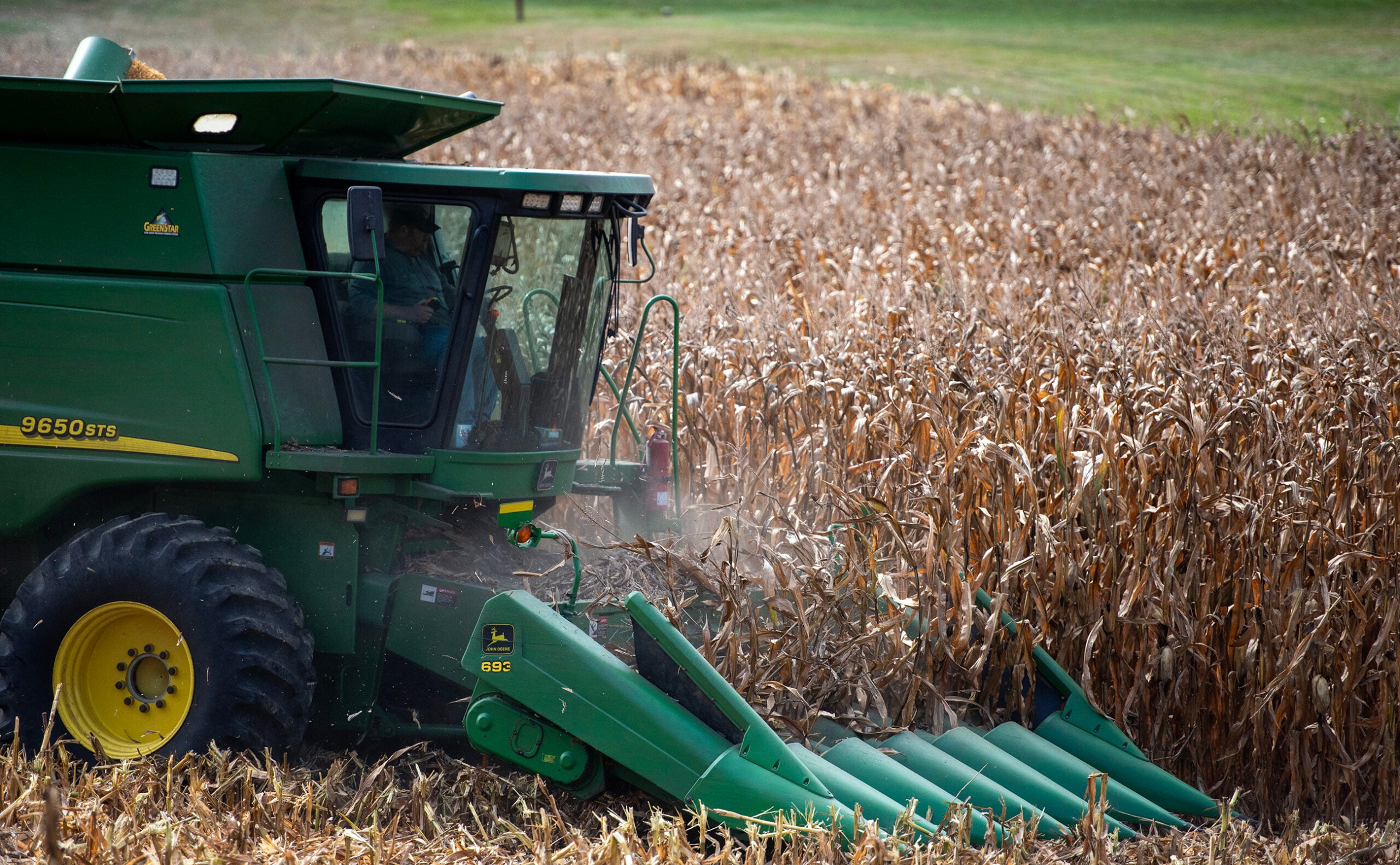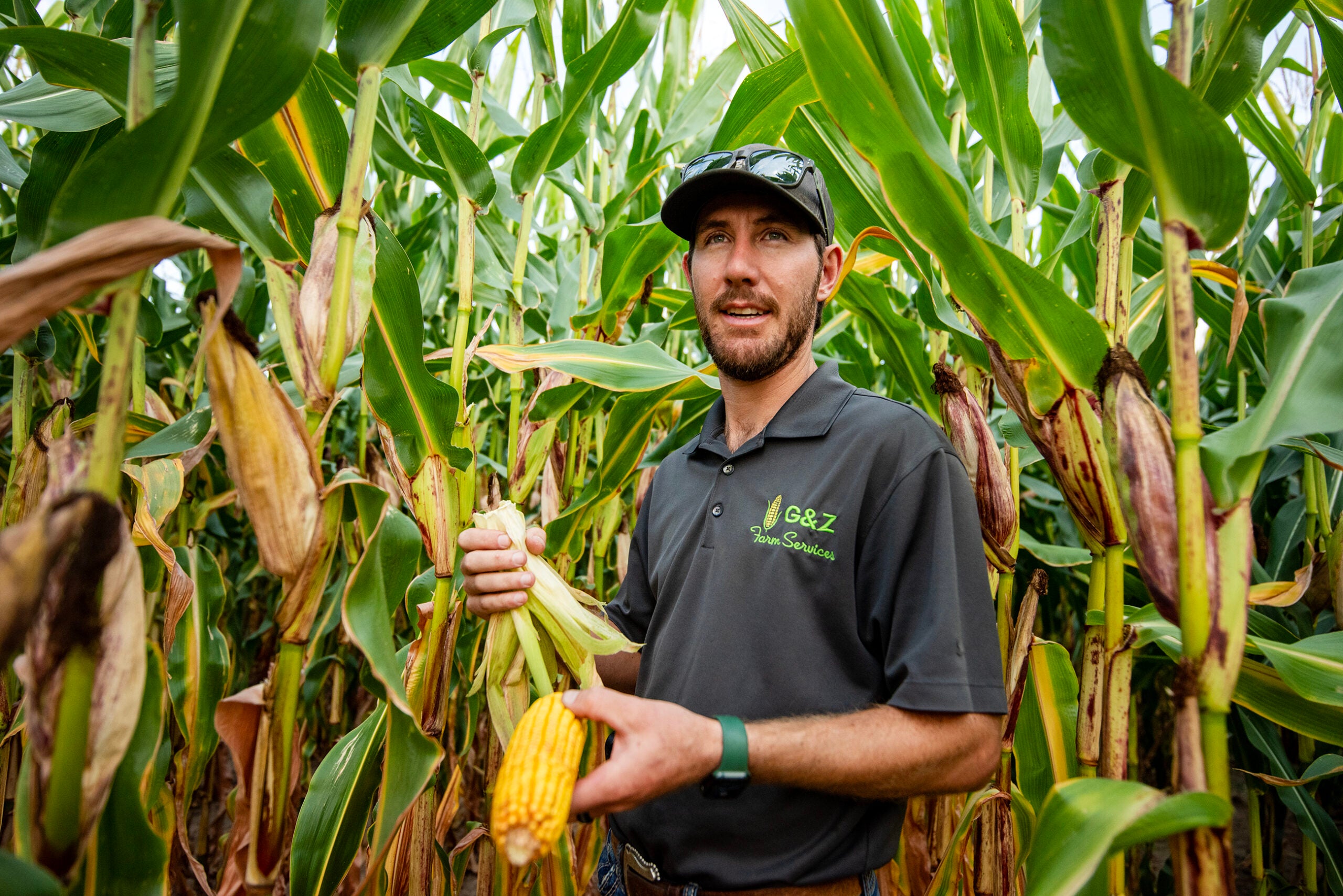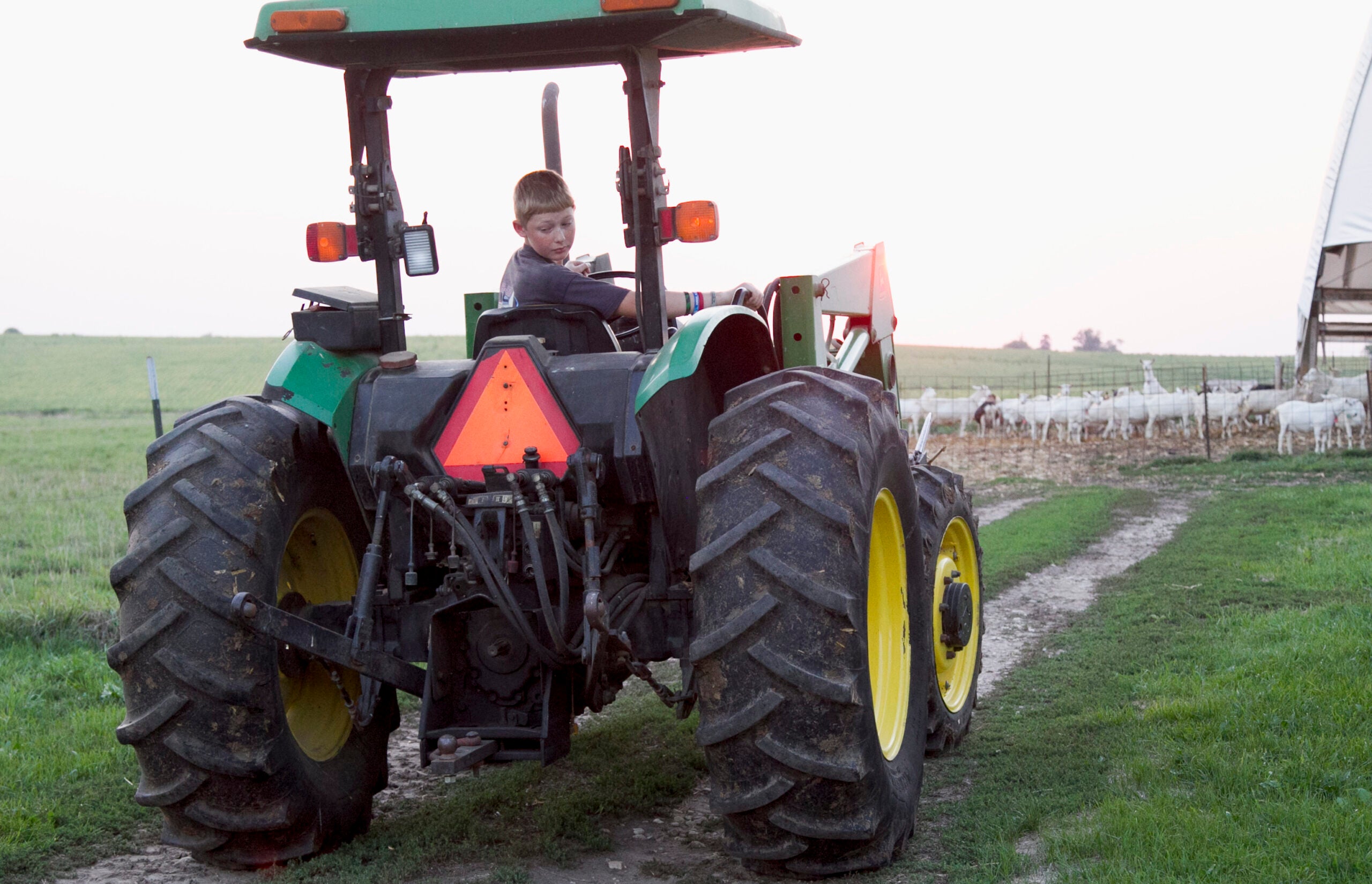Linda Ceylor said she has cell reception on her organic dairy farm in Price County. It just depends on where you’re standing.
“Sometimes I’ll be having a conversation, even in my house where I have a booster, and if I move to the left or move to the right, somebody will say ‘wait, you broke up,’” she said. “Then I’ve got to straighten up and try to get back into the position.”
Ceylor said she uses the same cellular network for internet access on her computer. The connection is what she uses for everything from texting her cow breeder to searching Facebook Marketplace for a piece of equipment. She frequently checks data about her milk quality that her processor posts online and stays up to date on proposed changes to organic certification requirements.
News with a little more humanity
WPR’s “Wisconsin Today” newsletter keeps you connected to the state you love without feeling overwhelmed. No paywall. No agenda. No corporate filter.
Across the agriculture industry, online tools and cell phones have become an increasingly important part of how farms operate. But a recent survey by the U.S. Department of Agriculture’s National Agricultural Statistics Service found that only 83 percent of Wisconsin farms reported having internet access. That’s one percentage point more than the same survey in 2021 and in 2019.
Two years ago, Wisconsin was in line with the national average for internet access. But the U.S. response surpassed the state this year, growing to 85 percent.
John Shutske is a professor of biological systems engineering at the University of Wisconsin-Madison who has studied how the agriculture industry is adopting new technologies. Shutske said he was surprised more farms weren’t reporting internet access, especially after the COVID-19 pandemic forced children to learn from home and required everyone to start doing more things online.
“I do sort of feel for the people in the 17 percent (without access),” Shutske said. “Those tend to be older farmers. They may not be people who have kids at home, so this whole school child phenomenon may or may not have played a big role. But you know, there’s so many things now in agriculture, where having a computer and having some form of Internet access is pretty important”.
Ceylor said like any business, not having internet access when she needs it can not only be frustrating but also detrimental to her business. She said she needs the internet to be there whenever she goes to use it.
“All of that is totally essential, and it’s essential at that moment,” she said. “I may not be able to be sitting down and working things out at 7 p.m. but when I need to use it at 10 p.m., it really needs to be there, and it’s very frustrating when it isn’t. And I’ve had a lot of times like that.”
Across the country, 75 percent of farms reported using cellular networks as a primary way to access the internet. In Wisconsin, only 65 percent of farms used cellular data. 56 percent of Wisconsin farms reported having broadband, slightly more than to the national level of 51 percent. Three percent of Wisconsin farms reported that they still use dial-up internet, one percentage point higher than the national average. Some farms reported having multiple types of internet access.
On top of basic business needs, Shutske said farm management decisions are becomingly increasingly data-driven. New technologies make it possible for farms to gather better data about individual fields or animals. Often called “precision agriculture,” the methods include GPS mapping and monitors built into tractors that help farmers target fertilizers or pesticides to achieve higher yields.
But fewer Wisconsin farms reported using precision agriculture practices on their farm compared to the national average. The federal survey found 27 percent of U.S. farms reported using these practices, up from 25 percent in 2021. But in Wisconsin, only 18 percent of farms reported using precision agriculture practices, up three percentage points from two years ago.
Shutske said the topography and size of fields could influence whether Wisconsin farms are adopting these new tools.
“We have big farms in the state, but we don’t necessarily have the big acreages that are spread out where you can literally see miles across the horizon,” he said. “That’s part of it. But I also think, in areas where we may want to use precision agriculture, tech, and especially anything that relies on a mobile signal, there are parts of the state … it’s really difficult to have that communication.”
He said these types of monitors and programs are key to adopting more automation or robotic labor, technologies that many farms are looking to as a way to solve labor shortages.
As more producers find ways to collect and track information about their farms, Shutske said he foresees a future where that data becomes valuable beyond management decisions.
“There’s going to be an expectation, if you look out at the next five to 10 years, where if I purchase a farm, or if I’m looking at renting from a farmer, I want to know, what did that farm produce? What did the variability look like from year to year?” he said. “That data is eventually going to affect land rental values and even for people who are going to be selling farmland, part of the value of that is going to be the data that goes with it.”
But Shutske said that doesn’t mean farms should be investing in every new piece of tech that emerges. He said many tools are still in their infancy and haven’t yet proven their economic benefits over the long term.
State and federal lawmakers have put more money toward rural broadband expansion in recent years, including $1 billion recently announced from the federal Infrastructure Investment and Jobs Act.
Ceylor said she thinks that money has made a difference in improving rural service. But she thinks it will take time before everyone in rural communities feels the benefits of the investment.
Wisconsin Public Radio, © Copyright 2026, Board of Regents of the University of Wisconsin System and Wisconsin Educational Communications Board.





